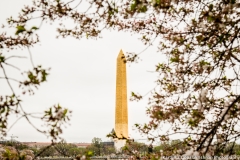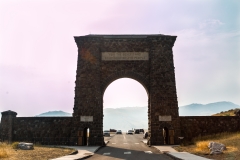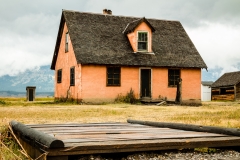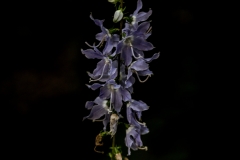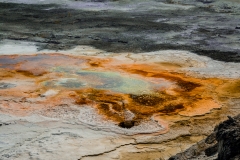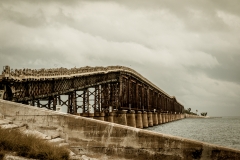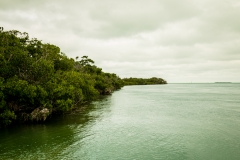Petrified Forest National Park
Hope everyone is doing great. I have been occupied with work lately and couldn’t be active in this space, but then I haven’t stopped traveling. We traveled to Vegas during Memorial weekend and visited three National Parks – Petrified Forest, Saguaro and Joshua Tree National Park. With that note, I have now visited every National Park in the state of Arizona. Grand Canyon National Park in Arizona is the most rated and most visited park in Arizona while Petrified Forest in underrated though it is nearby. But then, one has visited the park to appreciate its dynamic landscape where early dinosaurs roamed. Countless colors, hues, and shades paint this tapestry of time that stretches as far as your eye can see. Shaped by wind and water, this land holds vital clues to the past.
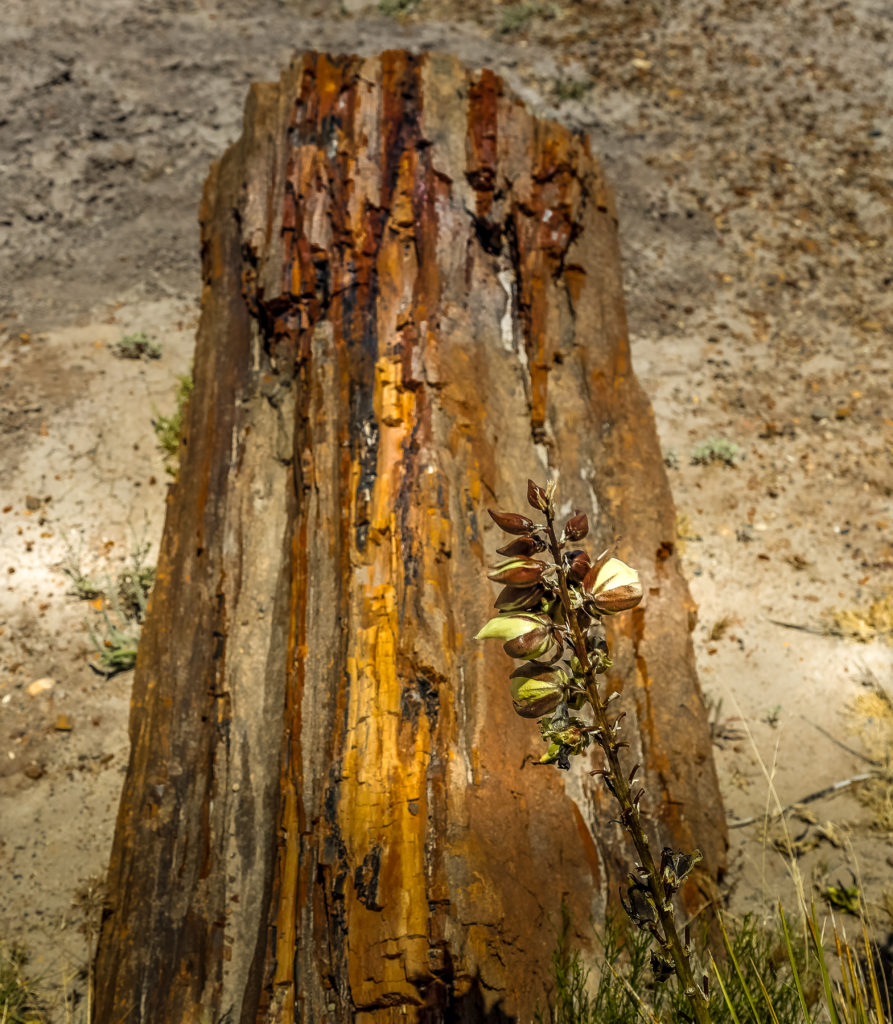
Petrified Wood Log
We traveled to Cottonwood from Vegas and stayed overnight as it is close by Sedona, two hours away from Petrified and an hour away from Phoenix. Petrified Forest is not as vast as Grand Canyon, but you can easily spend a whole day. We had an entire day to explore the park and read on to know about our experiences and recommendations.
Theodore Roosevelt created the Petrified Forest National Monument on December 8, 1906. Petrified Forest was designated as a national park on December 9, 1962. The park is located in the Navajo and Apache counties in northeastern Arizona. The place is one of the best places in the worked to see the fossil record from the Late Triassic Period. The remnants of prehistoric forests, now petrified wood, plant and animal fossils, and artifacts prove that early dinosaurs roamed and later giant forests toppled. At first glance, these badlands might appear barren and lifeless, but when we look closely, we could discover a living scientific laboratory that reveals prehistoric plants, animals and a river system larger than anything on earth today.
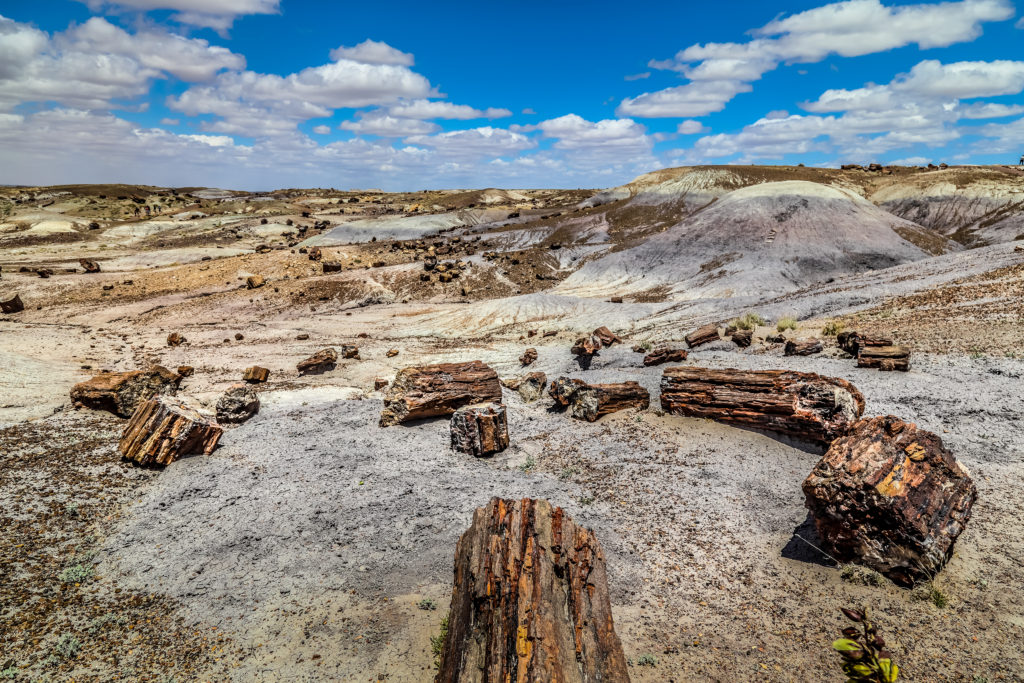
Crystal Forest
What is Petrified Wood?
As the trees died or were knocked down by wind or water, the logs were washed away and were buried by layers of sediment. The logs decayed over centuries. Minerals, including silica dissolved from volcanic ash, were absorbed into the porous woods and crystallized within the cellular structure over thousands of years. This process replaced the organic material as it broke down over time, leading to the formation of jewel-like crystals of clear quartz, purple amethyst, yellow citrine, and smoky quartz.
Petrified wood found in the park and the surrounding region is made up of almost solid quartz. Each piece is like a giant crystal, often sparkling in the sunlight as if covered by glitter. The rainbow of colors is produced by impurities in the quartz, such as iron, carbon, and manganese.
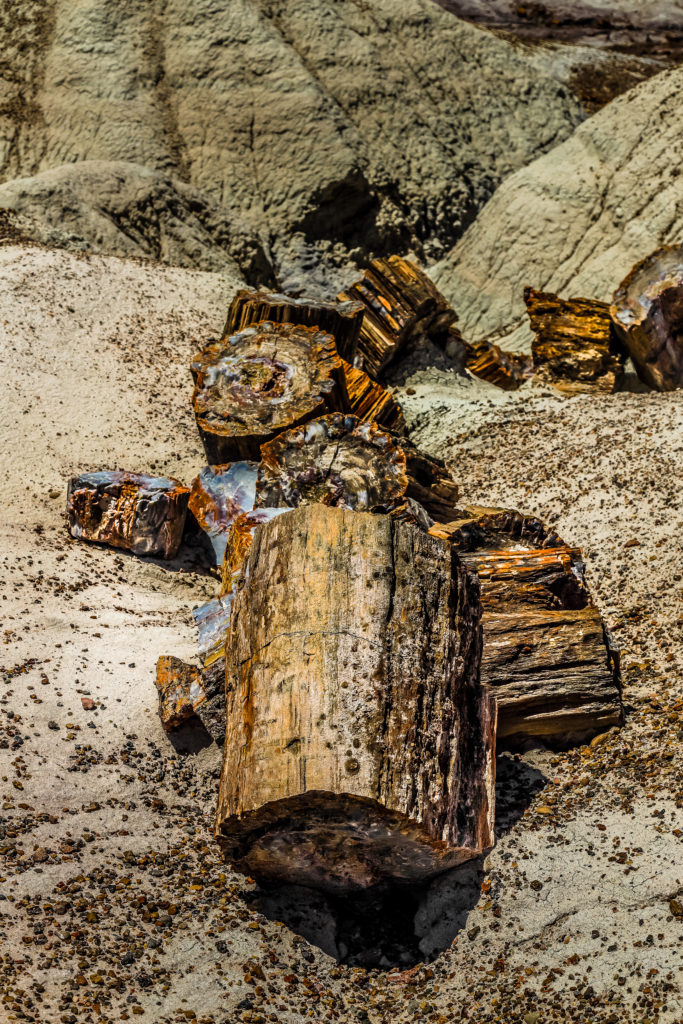
Petrified Wood – Crystal Forest
FAST FACTS:
- The park is open at different hours during the year. Ensure to check the park website for operating hours
- Park has entrance fees
- Arizona does not observe daylight saving time and follows Mountain Standard time year around
- Restrooms are available only at few viewpoints
- Ensure to carry as many water bottles as the weather gets hotter.
- There are no campgrounds or lodging facilities available inside the park.
- Please leave the petrified wood for others to enjoy.
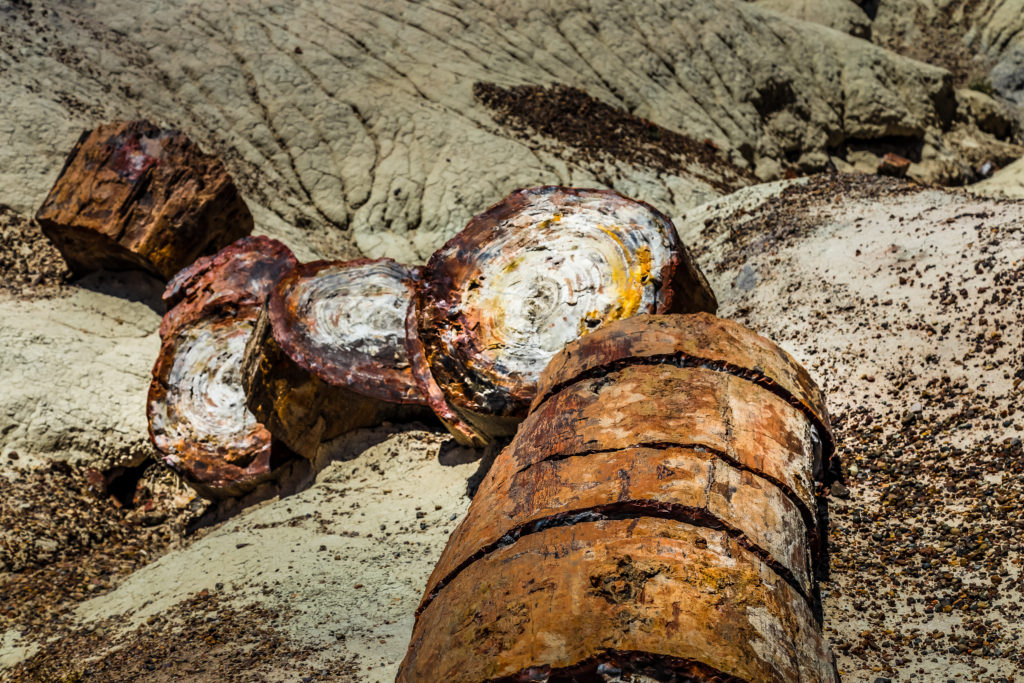
Petrified Wood – Crystal Forest
Things to do in Petrified Forest National Park
The park has a 28-mile paved road that runs through the Petrified Wood from the southern end to the Painted Desert in the northern end of the park.
Drive along the park road
This is the best way to explore the park if you are short on time. Follow the park road for a journey of discovery. Stop at the various overlooks along the way.
Visit the Rainbow Forest Museum and Visitor Center
An ideal stop-over for kids. The center has information about the park, fossil exhibits and skeletons, and a bookstore. One can watch a park film here.
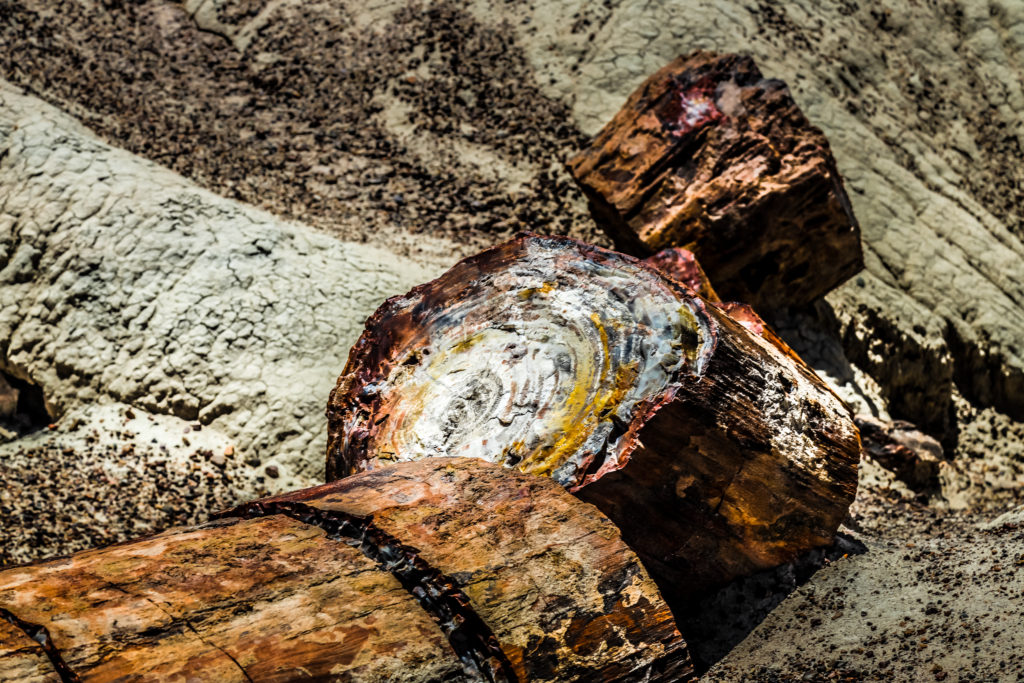
Petrified Wood Logs
Giant Logs Trail
Giant Logs Train is one of the easily accessible trails located behind the Rainbow Forest Museum and the entire round loop is 0.4 miles. The entire trail features some of the largest and most colorful logs in the park. The “old faithful” log at the top of the trail is the largest log and it is almost 10 feet at the base.
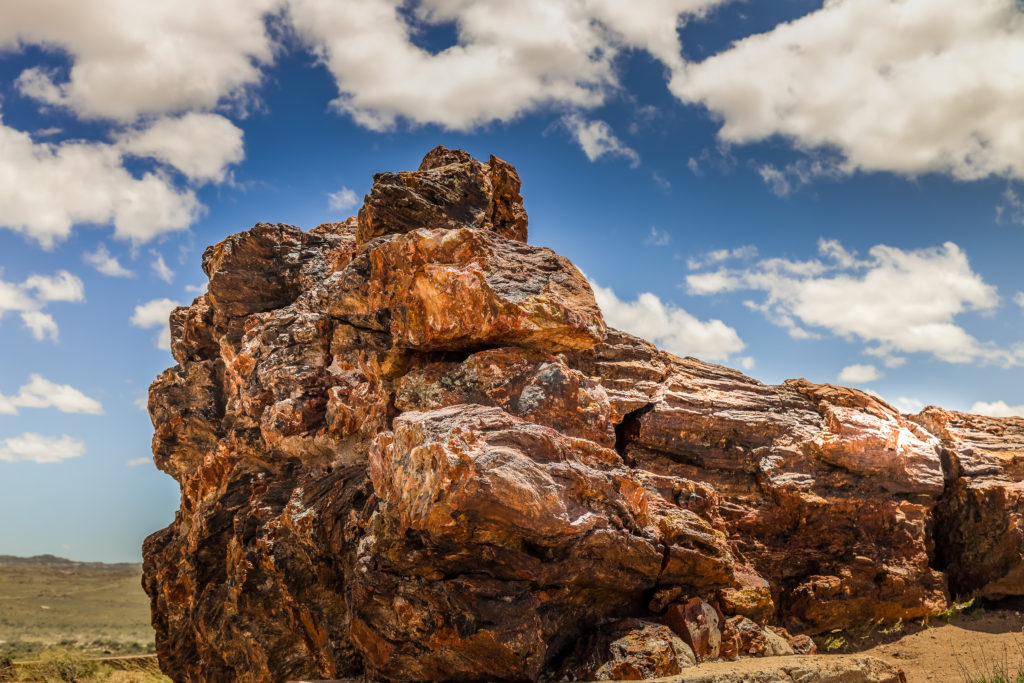
Giant Log
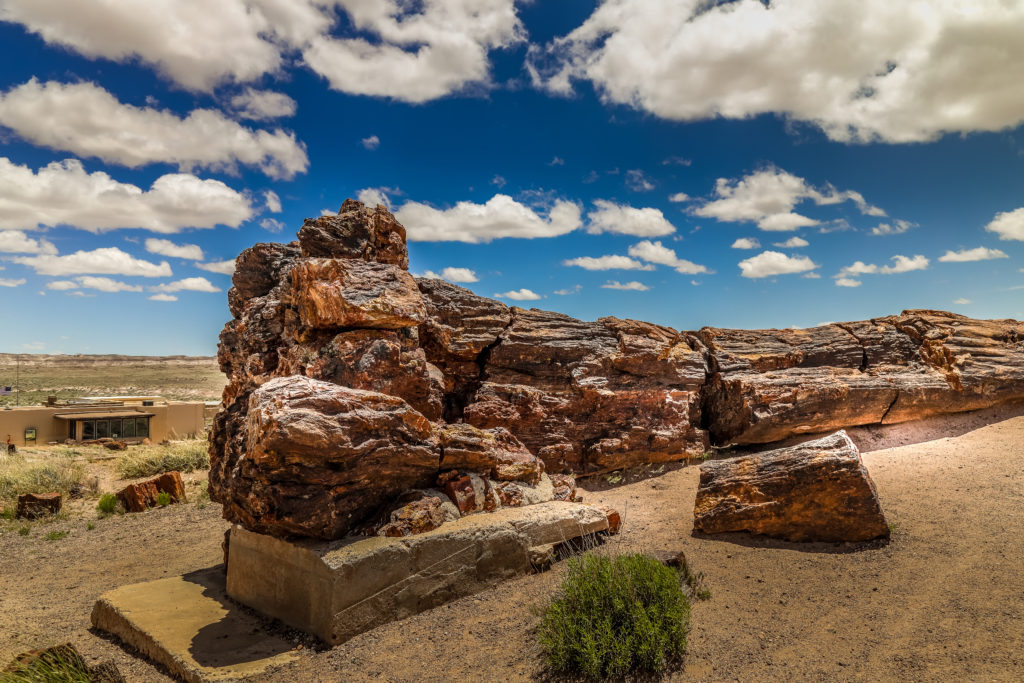
Giant Log
Crystal Forest
Crystal Forest is the best place to experience the petrified wood deposits. Beautiful crystals found in the petrified logs are observed along this 0.75-mile paved path. If you visit during the early summer months, you could see wildflowers in the park – bright yellow cactus flowers. We loved the entire walk and it was very windy that it was really pushing us.

Crystal Forest
Jasper Forest
Enjoy a panoramic view of the area with a high concentration of petrified wood.
We didn’t visit Agate Bridge as it was around 100 degrees and frequent sips of water didn’t help us. We were completely drained out, hence we decided to skip Agate Bridge. But then if you have time, please do visit this 110ft petrified log spanning a gully.
Blue Mesa
Mesas and buttes are other features created by erosion. The flat tops are created by the presence of cap rocks, more erosion-resistant rock such as sandstone over softer clays. The softer rock is protected by the capstones, but, as the sides weather and the protective rock falls down, the softer rock erodes away as it is exposed to the elements. Without the capstone, the feature becomes another rolling badland. Mesas typically are wider than they are tall while buttes are taller than they are wide. Towers, monuments, and hoodoos are even further eroded features.
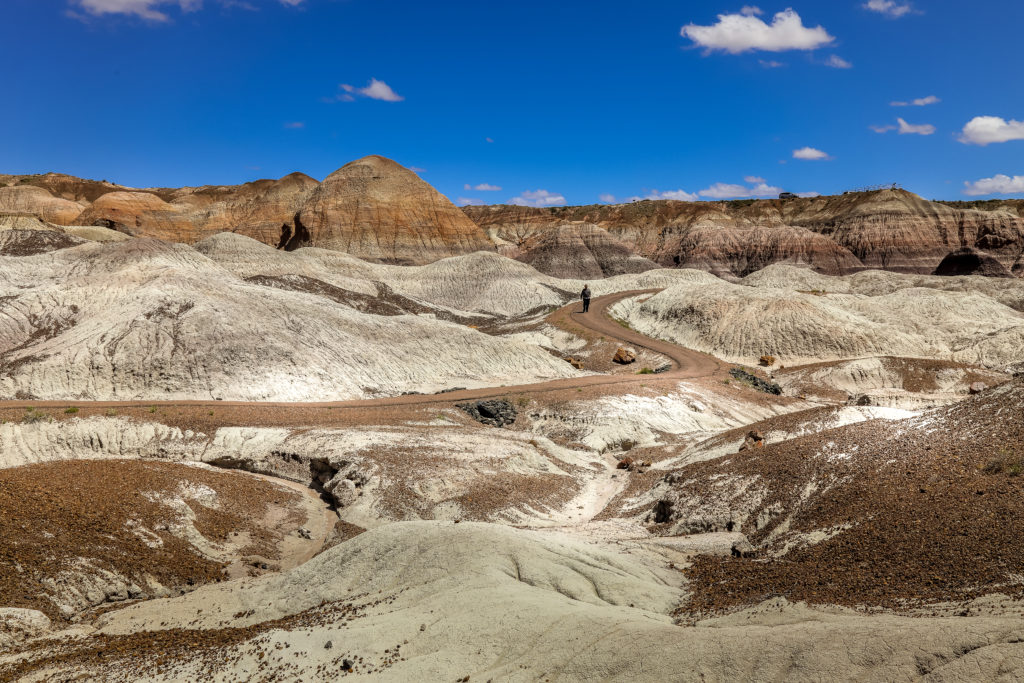
Blue Mesa
This is one of the must-see spots in the park and the trail is 1 mile round loop. This alternately paved and gravel trail loop offers a unique view of badlands hills of the bluish bentonite clay as well as petrified wood. Watch out for the vibrant blue, purple and gray badlands dotted with colorful petrified wood.
Newspaper Rock
Look through the telescope to see more than 650 petroglyphs, some of which are over 2000 years old.
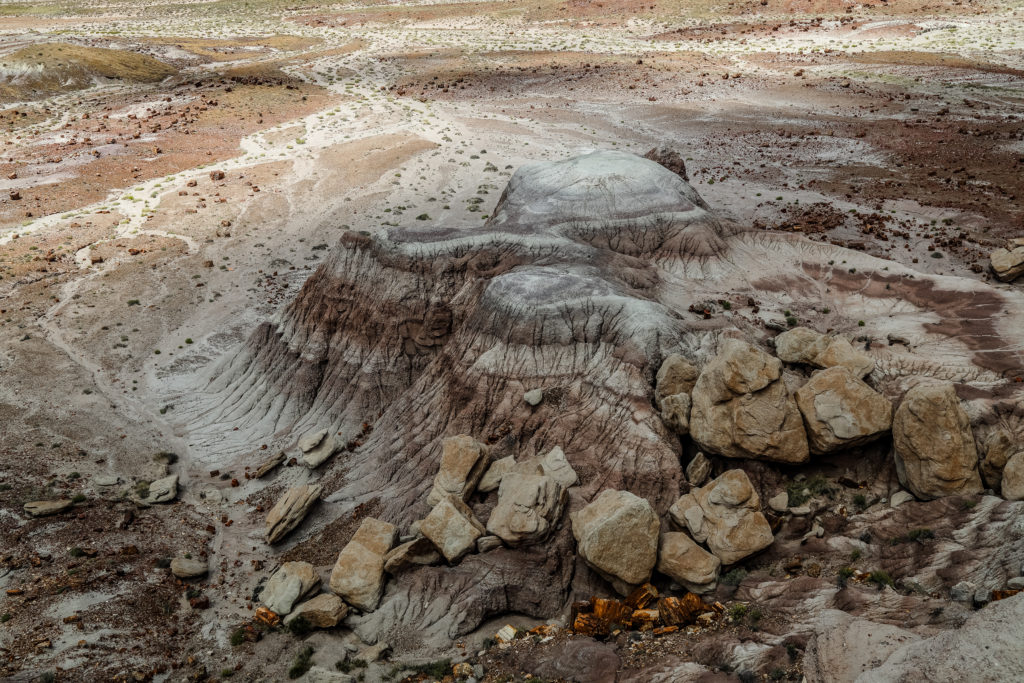
Blue Mesa
Route 66 Alignment
Petrified National Park is the only park containing a section of the historic route 66. A 1932 Studebaker shows where the section of the original route 66 crossed the park. Route 66 runs from Chicago to Los –Angeles!
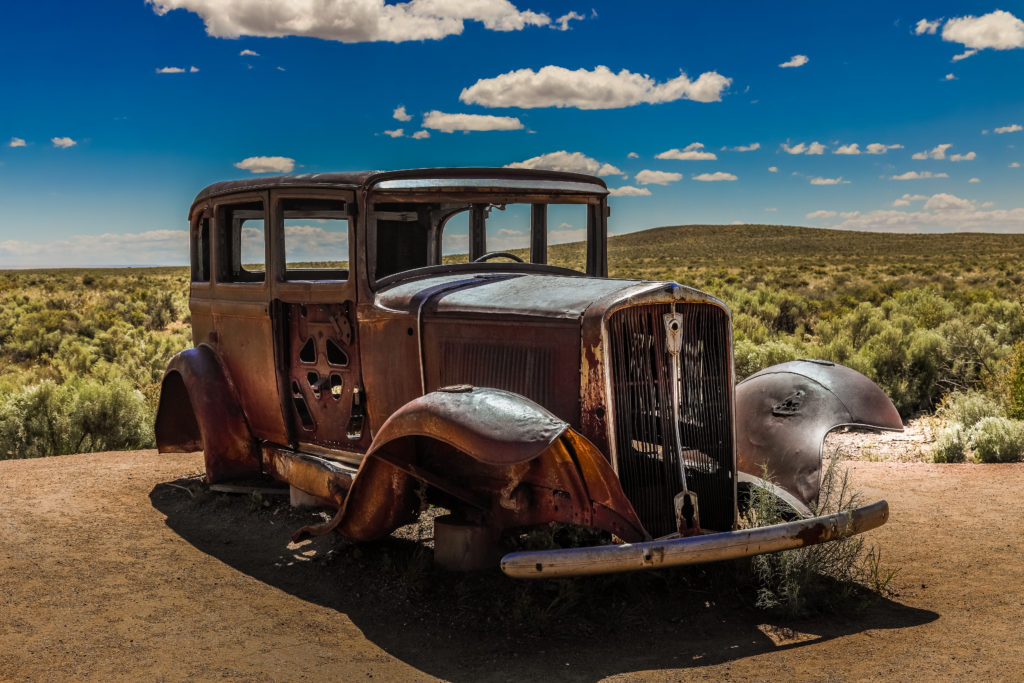
Route 66 Alignment
Painted Desert
Another must-see spot in the park is the Painted Desert. The colorful Painted Desert badlands are composed of bentonite, a product of altered volcanic ash. The clay minerals in the bentonite can absorb water and swell much as eight times their dry volume. The expansion and contraction properties of the bentonite cause rapid erosion including by preventing much vegetation from growing on—and thus fixing—the slopes of the hills.
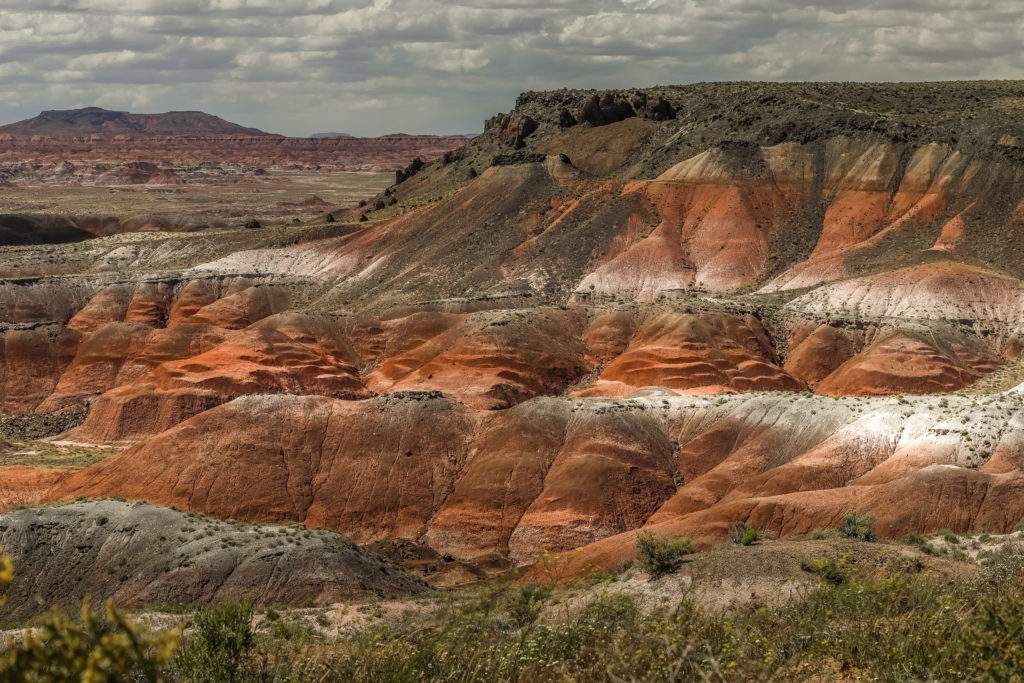
Painted Desert
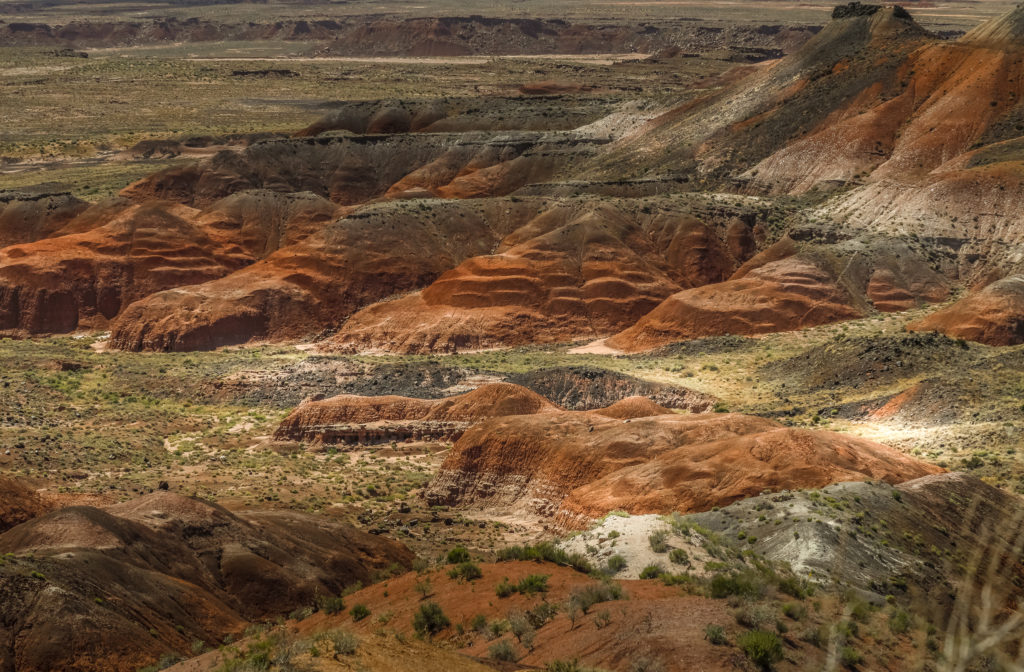
Painted Desert
There are several viewpoints – (Lacey, Whipple, Nizhoni, Pintado, Chinde, Kachina, Tawa, Tigoni point) and each one showcases spectacular views of the multi-hued landscape. Restrooms are available in the Chinde Point. Each of these viewpoints provides a spectacular view of this vast painted desert in each direction.
Painted Desert Inn
The Inn is built in Pueblo Revival Style in the early 20th century. This historic landmark is now converted into a museum with exhibits about its history and architecture.
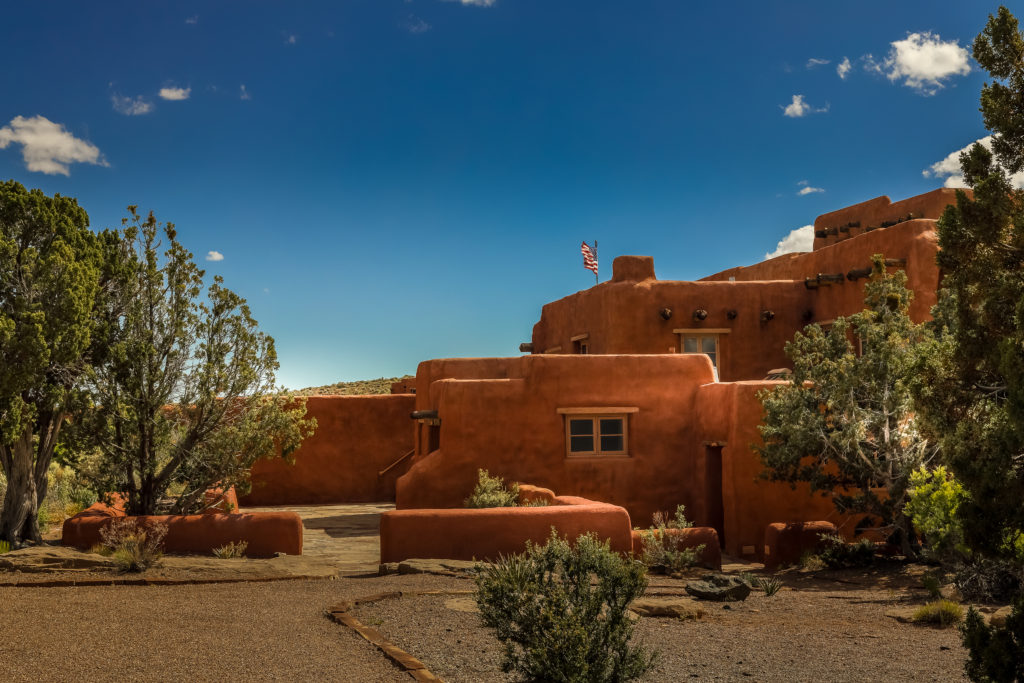
Painted Desert Inn
The park road ends at the Painted Desert Visitor Center. The National Park has many offbeat hikes and one requires proper permission to go on an offbeat hike.
Have you visited Petrified Forest National Park? If not, I would highly suggest you include this in your next itinerary to Arizona and you will be amazed at how the land has transformed over the years!
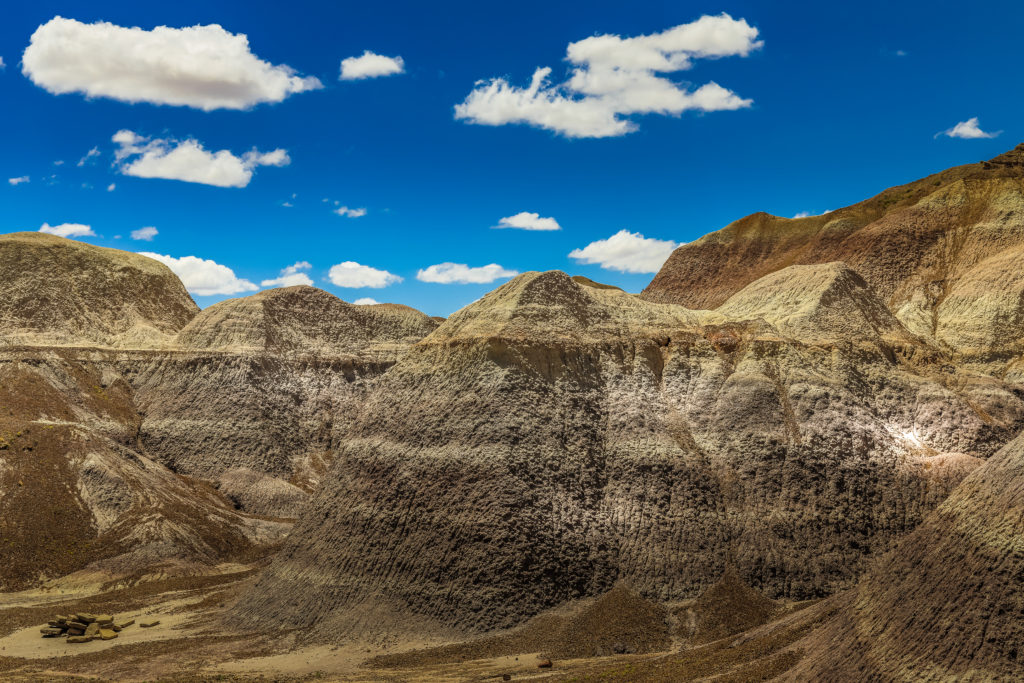
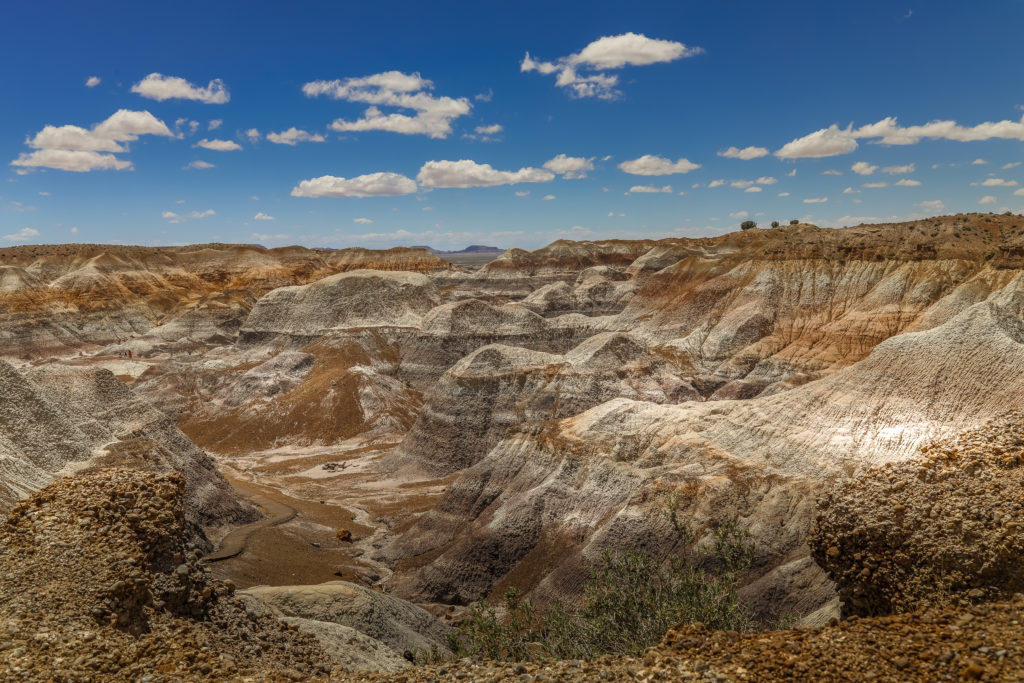
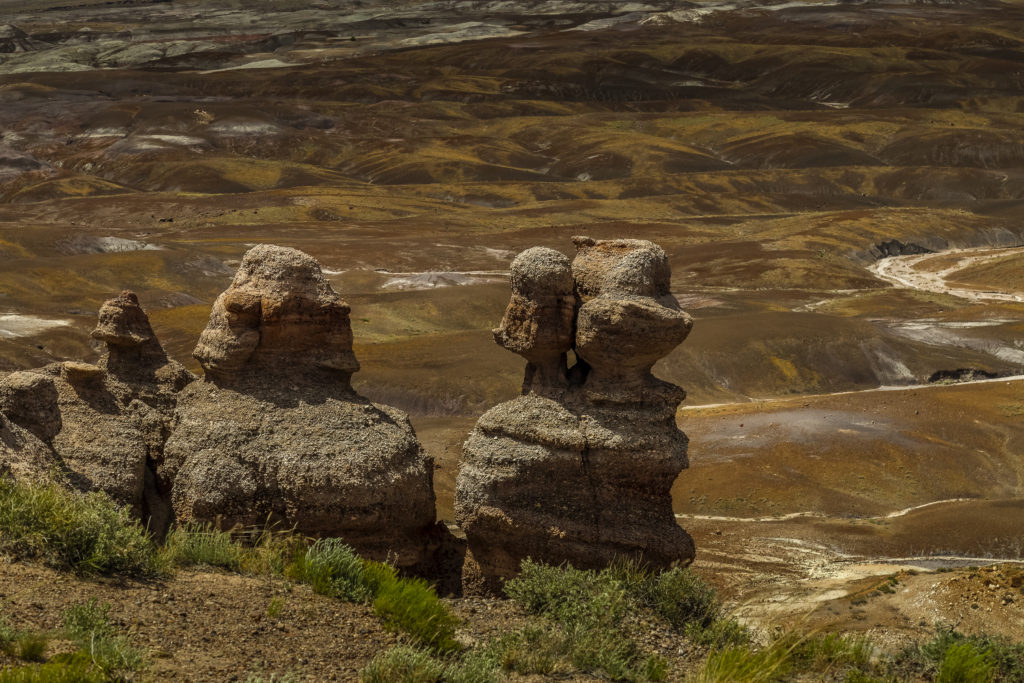
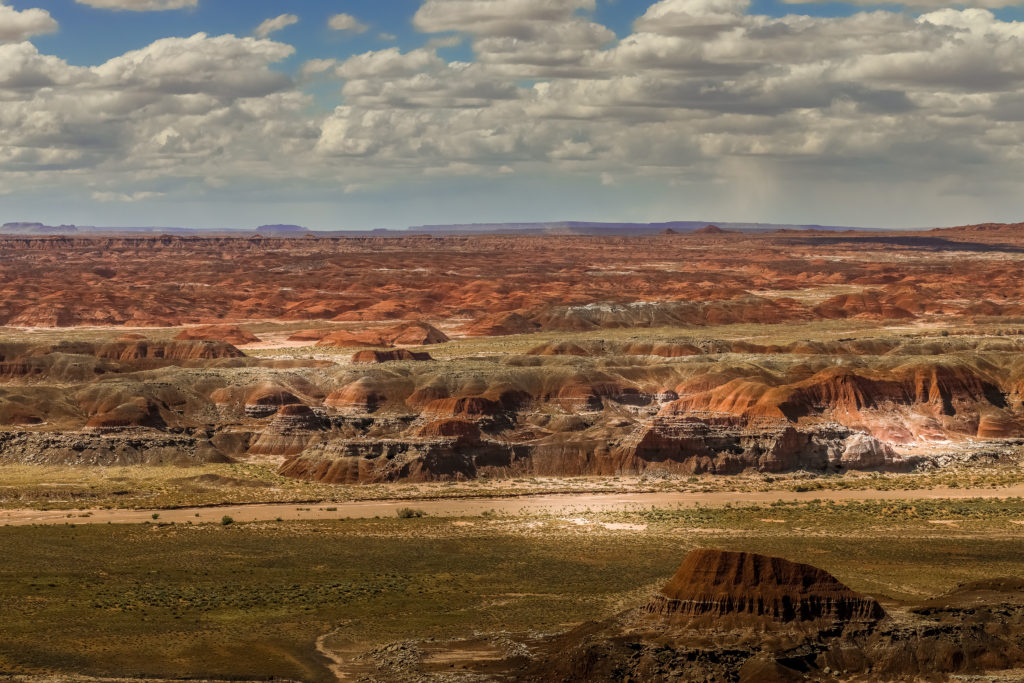
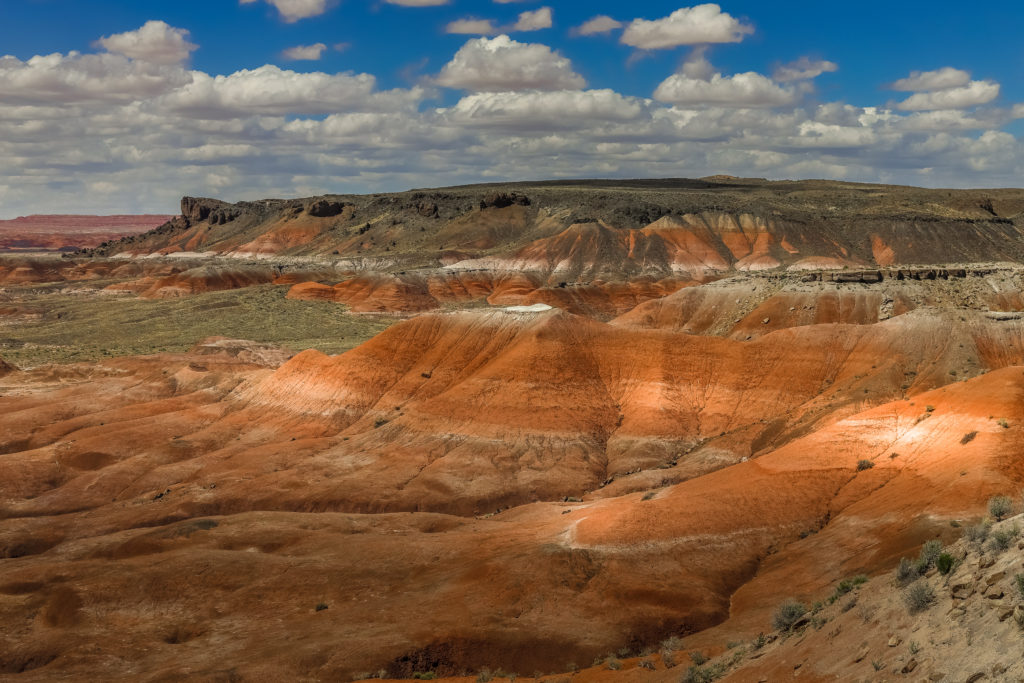
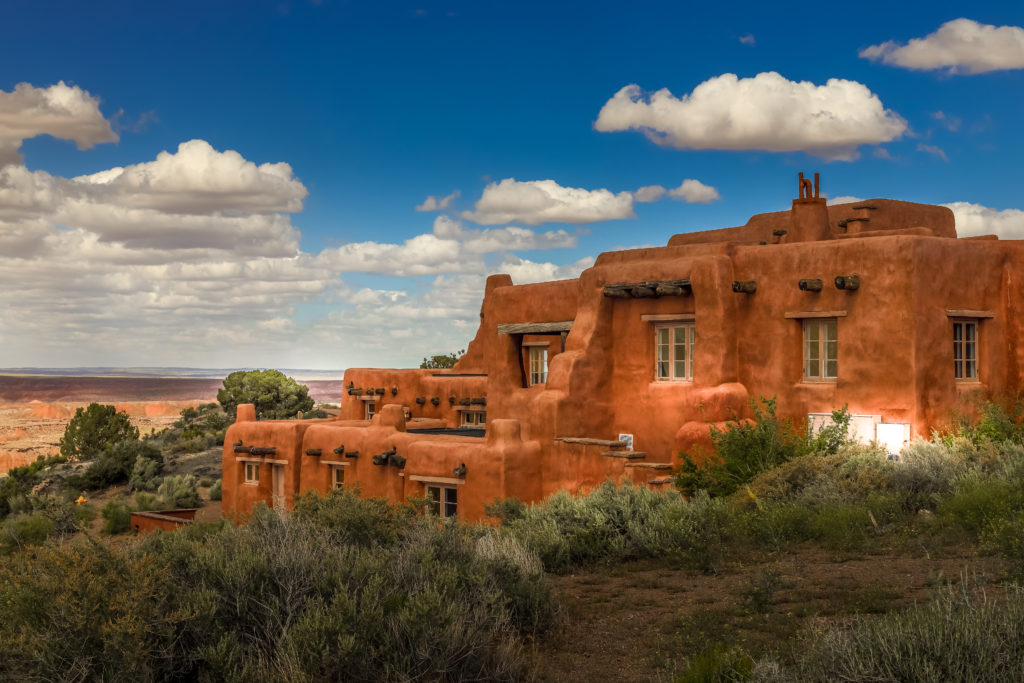
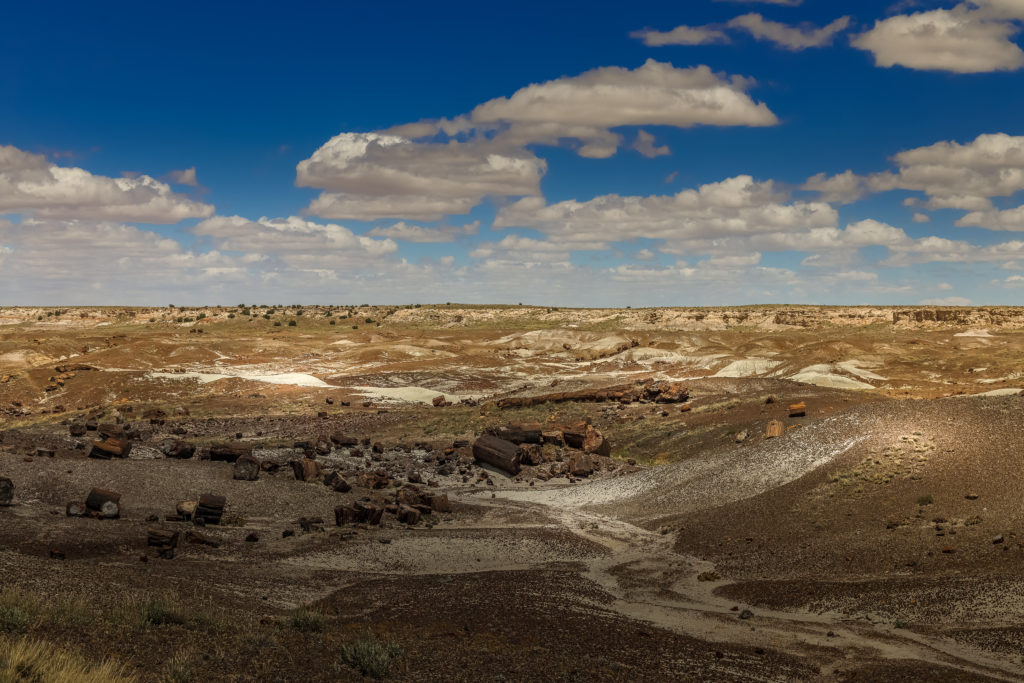
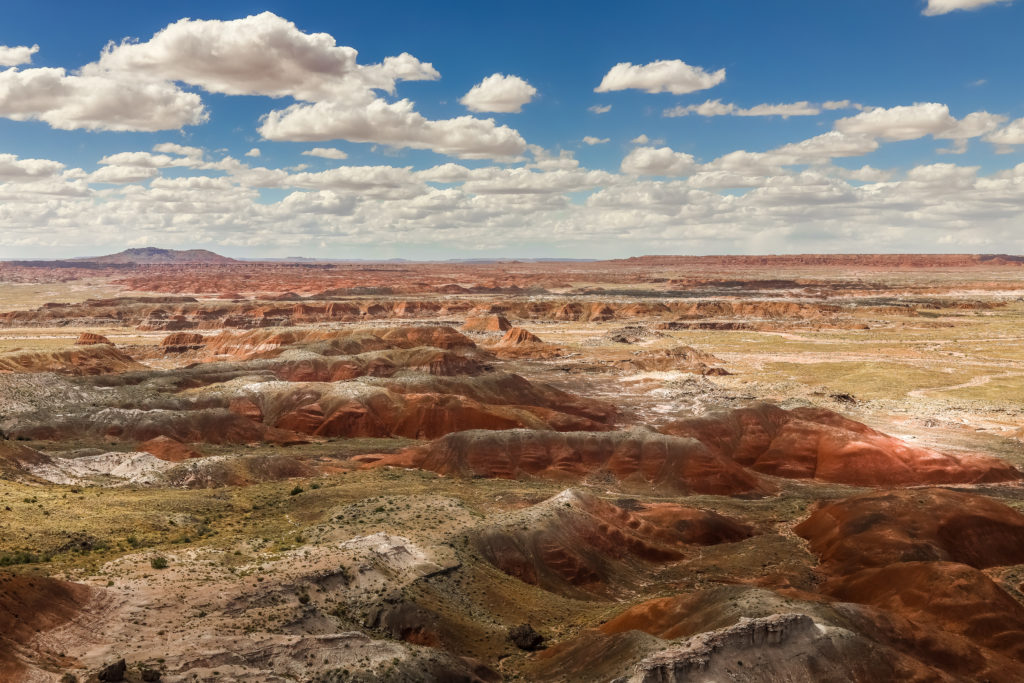
If you like my travelogue and wish to follow my travel stories further, then do like and follow my profile here – Facebook, Google, Instagram
Thanks, Karthi


